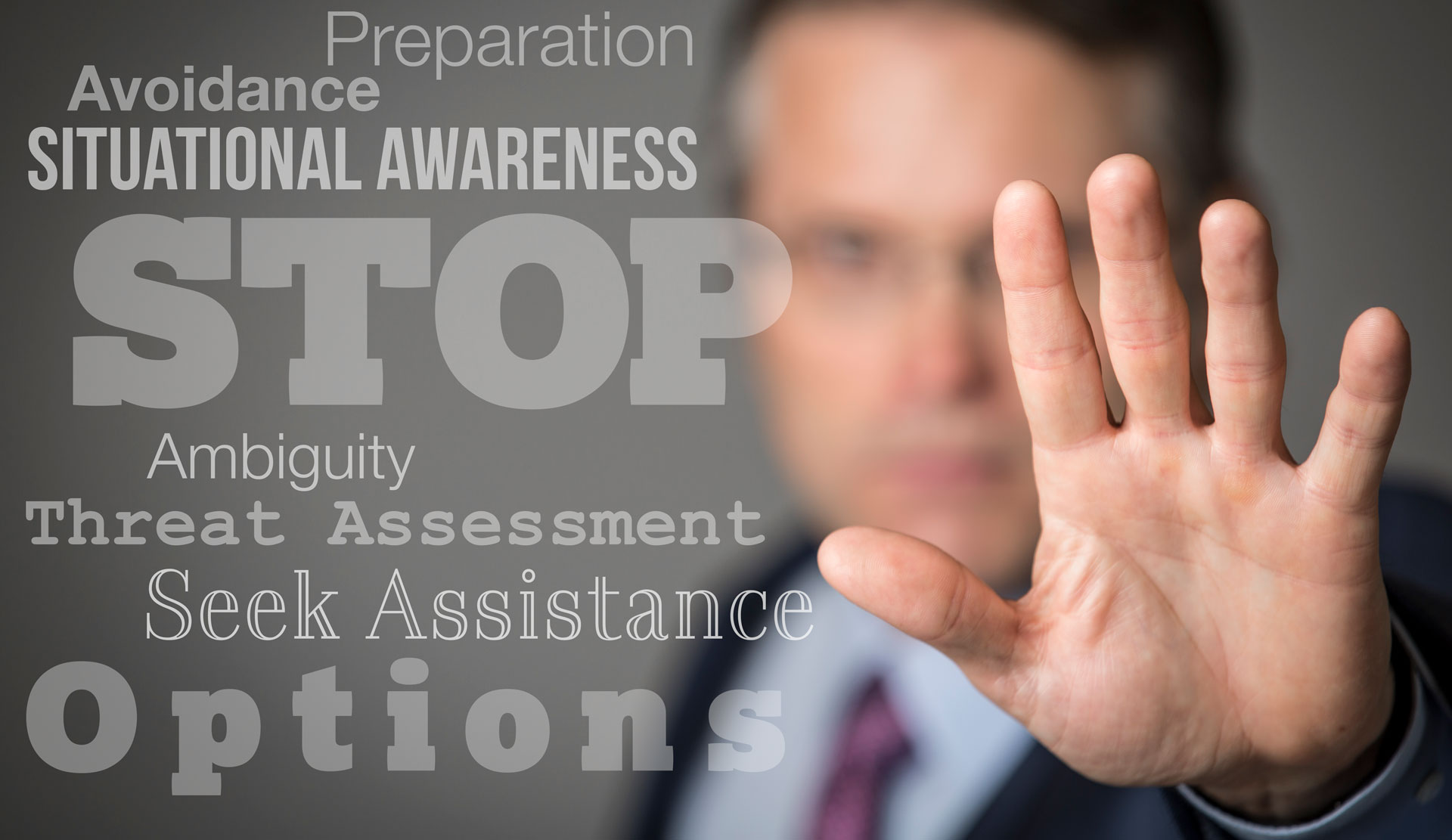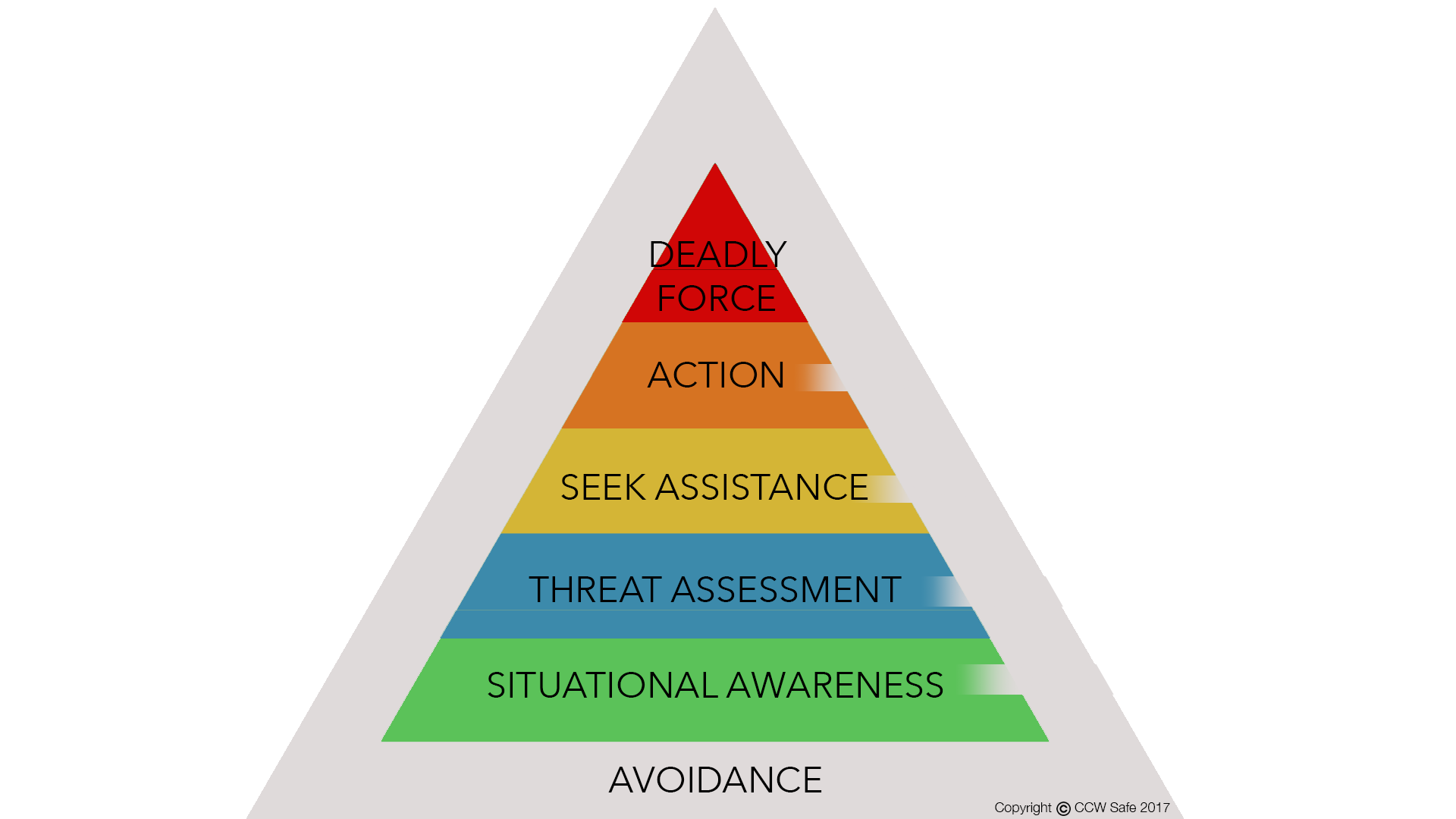
Posted on July 10, 2017
Situational Awareness and the Civilian Use of Force
Situational Awareness and the Civilian Use of Force Continuum
Law enforcement has long relied upon the use of force continuum. This continuum sets out guidelines for the amount and level of force recommended for use in the performance of law enforcement duties. Although each situation is different and context clues need to be taken into account, an example of the use of force continuum includes:
- Officer presence: No force is used and the officers’ presence and attitudes are professional and non-threatening. This is considered to be the best resolution to most situations.
- Verbalization: Officers issue calm, non-threatening commands in this non-physical force. Voices’ volumes may be increased and commands may be shortened to gain compliance.
- Empty-hand control: Officers use bodily force to gain a situation’s control. This can be either through “soft techniques” in which an officer uses grabs, holds and joint locks for restraint, or “hard techniques” by punches and kicks to restrain a non-compliant individual.
- Less-lethal methods: Officers use less-lethal method technologies to gain control by blunt impact, chemical (pepper spray) or Conducted Energy Devices (CEDs).
- Lethal force: Officers use lethal weapons to gain control of a situation. This should only be used if a suspect poses a serious threat to the officer or another individual.
This continuum has changed slightly over the years due to new products like tasers and oleoresin capsicum (OC) pepper spray. Generally speaking, however, the use of force continuum has remained fairly consistent.
An official use of force continuum for non-law enforcement (i.e. citizens) has never been developed to the extent it has for law enforcement. Even so, a few articles discussing this topic have been published in recent years.
In this series, we’re going to share our thoughts on the use of force continuum for citizens, based on our own knowledge, experience and application of the law enforcement use of force continuum during our careers as police officers.

Use of Force for Non-Law Enforcement Citizens
The question we’re asked most frequently regarding the use of deadly force is when can you use deadly force. “When can I shoot?” is a question that comes with countless variables. The answer to this question is based on a seemingly endless number of possible scenarios. Quite frankly, it is the hardest question to answer.
We don’t ask when we can pay our taxes, do we? Rather, we ask “When do I HAVE to pay my taxes?” The real question regarding deadly force is similar to how we phrase the tax question. “When do I have to shoot?” O r better yet, “At what point do I have no other options but to shoot?” The short answer is that you fire your weapon when you fear death or serious bodily injury. The complexity lies in the fact that potentially life-threatening situations differ according to the capabilities of the individual.
In this series, we’ll look at continuum options available at different levels. We will then give you some advice about how to turn these options into a comprehensive self-defense plan. As stated above, many variables factor into someone’s decision to use force. These variables arise from individual characteristics, including physical traits (healthy or out of shape), age, body type and even underlying medical issues that limit performance.
Preparation and avoidance are the foundations of the civilian use of force continuum. Criminal investigators will look to see if you attempted to avoid a violent encounter before resorting to the use of force for self-defense.
The Civilian Use of Force Continuum Level I: Situational Awareness
Situational awareness is the first level in the civilian use of force continuum. From an early age, we all learn what to look out for. Situational awareness comes from personal experiences, knowledge and information gathered from others. Every action is based on your situational awareness, making it the most important part of the continuum.
Situational awareness includes the ability to notice things that are out of place or potentially dangerous, as well as your ability to quickly make complex decisions based on the information you have at that time.
Intuition is also a part of situational awareness. Trust your intuition, or gut feeling, you may have about a situation. Maybe you’re in an area or city you’ve never been to before. But because you notice details similar to places you normally avoid, you can calibrate a core “gut feeling” about a location you’re unfamiliar with.
The more experience you have, the more reliable your intuition will be. For example, a police officer with 10 years of experience on the streets will know how to read people and observe behavioral patterns, body language and other telltale indicators that are out of the ordinary. Because of experience, the officer will trust that his or her intuition is reliable, and then act upon that intuition.
Someone with less street experience may still get a gut feeling that something isn’t right. But because these feelings aren’t based on lived experiences, they might talk themselves out of acting on their intuition because they worry about offending someone or being wrong. Even if you don’t have a lot of experience in a given situation, pay attention to your intuition and don’t be afraid to follow it.
Visualization techniques are a form of training used by law enforcement that falls within the situational awareness classification. You don’t have to have a lot of tactical training or shooting experience, to utilize visualization techniques. The first situational awareness rule to reply upon is avoidance, whenever possible.
Having an avoidance plan in your mind for various risky scenarios may help you keep from getting drawn deeper into a situation that you really don’t want to be in.
To continue our series on a civilian’s guide to the use of force continuum, follow these links:
- The Civilian Use of Force Continuum, Level II: Threat Assessment
- The Civilian Use of Force Continuum, Level III: Seek Assistance
- The Civilian Use of Force Continuum, Level IV: Action
- The Civilian Use of Force Continuum, Level V: Deadly Force

Mike Darter
Co-Founder/CEO CCW Safe
Mike was a police officer in Oklahoma City from 1991-2001, and a federal contractor for the DOJ from 2001-2011. During his career, Mike investigated and testified in hundreds of violent crimes, including shootings, homicides, and other violent felony crimes. Mike was involved in a shooting as a police officer and went through a lawsuit from that shooting. The lawsuit was later dismissed, but his experience is what led to the creation of CCW Safe.